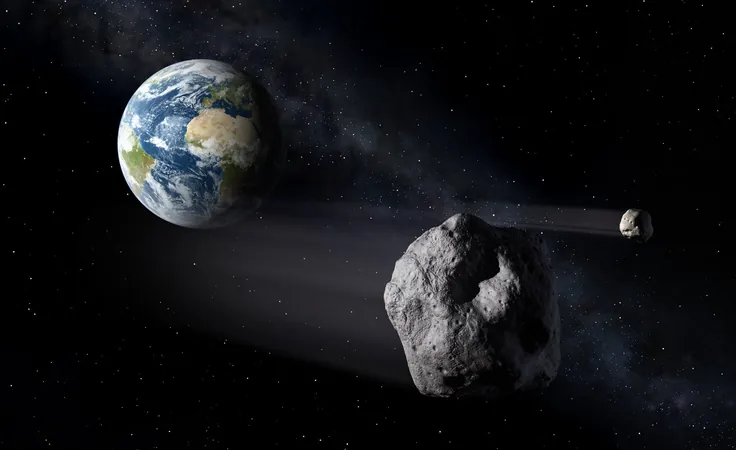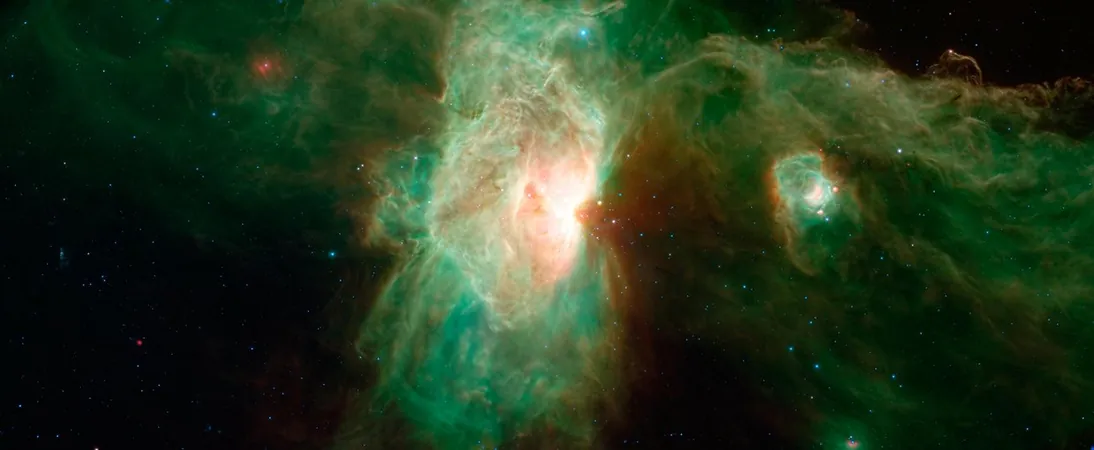
Earth’s New Mini Moon: What You Need to Know About This Celestial Visitor!
2024-09-27
Introduction
This weekend, Earth will welcome an exciting temporary resident from the depths of space — not little green men, but rather a tiny celestial body known as a mini moon! Officially named 2024 PT5, this miniature companion stretches only 33 feet (10 meters) across and will grace our night skies for the next two months, starting September 29.
Discovery by Astronomers
The discovery was made by astronomers Carlos de la Fuente Marcos and Raúl de la Fuente Marcos from Madrid’s Ciudad Universitaria. They uncovered this mini moon while sifting through data from the Asteroid Terrestrial-impact Last Alert System (ATLAS) using a telescope stationed at Sutherland Observing Station in South Africa. Interestingly, this telescope also played a pivotal role in spotting the recently discovered Comet Tsuchinshan-ATLAS (C/2023 A3), which is currently visible from Earth.
Safe Trajectory
Fortunately for us, PT5 poses no threat; it is not on a path to crash into Earth but rather will trace a horseshoe-shaped trajectory around our planet. After its brief sojourn, PT5 will escape Earth’s gravitational influence on November 25.
A Brief History of Earth’s Temporary Moons
2024 PT5 isn’t the first small celestial body to visit our planet. Earth has a history of attracting and later releasing temporary satellites. For instance, 2006 RH120 orbited Earth for about a year between 2006 and 2007, while 2020 CD3 lingered for a few years and dispersed in May 2020. Notably, these earlier visitors were even smaller than PT5, ranging from just 6 to 9 feet (2 to 3 meters) in diameter.
Astronomers have also identified other temporary moons that have made similar approaches to Earth. For example, 2022 NX1 buzzed around our planet in 1981, 2022, and is anticipated to return in 2051. Understanding these trajectories and the dynamics in play has helped refine our knowledge of their orbits.
Origin of PT5
So, where exactly did PT5 come from? Experts believe it originated from the asteroid belt, the region between Mars and Jupiter populated by numerous small rocky bodies. These asteroids are more likely to enter Earth’s gravitational influence due to their proximity and orbital similarities to our planet.
An Eye on the Skies
The event of a mini moon's arrival underscores the vastness and ever-changing nature of our solar system. As Earth interacts with these objects, it becomes a reminder of the dynamic environment we inhabit. While PT5 will only be with us for a fleeting two months, its presence invites us to look closer at our celestial neighbors.
Mark your calendars! The closest approach of this intriguing mini moon to Earth is scheduled for January 9, 2025, when it will be at a distance of 0.012 AU (astronomical units), approximately five times the distance of our own permanent Moon.
So, this weekend, as you step outside to gaze at the stars, take a moment to wonder about the journey of 2024 PT5 and the many cosmic wonders still waiting to be discovered! Be sure to keep an eye on the latest astronomical news for updates on this tiny traveler and future celestial events!





 Brasil (PT)
Brasil (PT)
 Canada (EN)
Canada (EN)
 Chile (ES)
Chile (ES)
 España (ES)
España (ES)
 France (FR)
France (FR)
 Hong Kong (EN)
Hong Kong (EN)
 Italia (IT)
Italia (IT)
 日本 (JA)
日本 (JA)
 Magyarország (HU)
Magyarország (HU)
 Norge (NO)
Norge (NO)
 Polska (PL)
Polska (PL)
 Schweiz (DE)
Schweiz (DE)
 Singapore (EN)
Singapore (EN)
 Sverige (SV)
Sverige (SV)
 Suomi (FI)
Suomi (FI)
 Türkiye (TR)
Türkiye (TR)